<< Previous | Displaying results 4121-4130 of 6776 for "" | Next >>
Following the Soviet occupation of Lithuania, the Lifszyc family began to search for ways to leave the country. David Lifszyc obtained a Curacao visa from the Dutch consulate. He also obtained an American visa because he was included on a list of distinguished rabbis submitted to the State Department by the Agudat Israel of America. After obtaining Soviet exit visas, the Lifszycs purchased tickets for Vladivostok on February 5, 1941. They started for Moscow, where they received Japanese transit visas. This…
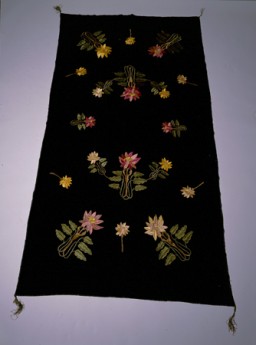
Following the Soviet occupation of Lithuania, the Lifszyc family began to search for ways to leave the country. David Lifszyc obtained a Curacao visa from the Dutch consulate. He also obtained an American visa because he was included on a list of distinguished rabbis submitted to the State Department by the Agudat Israel of America. After obtaining Soviet exit visas, the Lifszycs purchased tickets for Vladivostok on February 5, 1941. They started for Moscow, where they received Japanese transit visas. This…
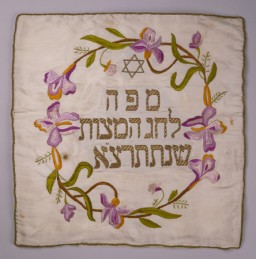
Front cover of a brochure from the Soviet travel agency Intourist, describing the amenities of the Trans-Siberian Express. Despite their anxieties, most of the Jewish refugees traveling on the train felt like tourists. [From the USHMM special exhibition Flight and Rescue.]
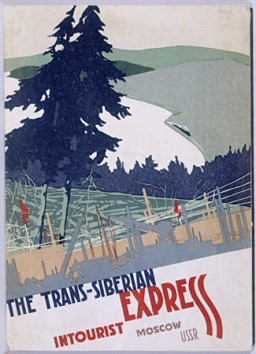
The Kobe Municipal Office issued this English-language tourist guide to Kobe and its environs. Jewish refugees in Kobe used such pieces of information. Kobe, Japan, 1940-1941. [From the USHMM special exhibition Flight and Rescue.]

The Kobe Municipal Office issued an English-language tourist guide to Kobe and its environs. The tourist map of Kobe pictured here was included with the guide. Jewish refugees in Kobe used such pieces of information. Kobe, Japan, 1940-1941. [From the USHMM special exhibition Flight and Rescue.]
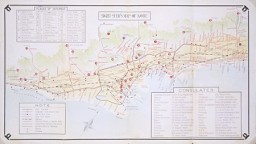
A souvenir stamp book that belonged to a Jewish refugee. The book contains multicolored stamps inscribed with dates and place names. May 1941, Kobe, Japan. [From the USHMM special exhibition Flight and Rescue.]

The table of contents from a Japanese-German phrase book purchased by German Jewish refugees shortly after their arrival in Japan. The phrase book offers useful expressions in Japanese relating to travel, hotel stays, eating, and shopping in Japan. Japan, 1940-1941. [From the USHMM special exhibition Flight and Rescue.]
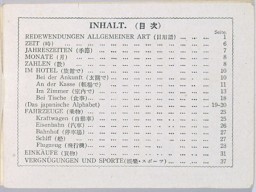
A few Polish Jewish refugees left Japan to join a small Jewish community in Harbin, Manchuria, in Japanese-occupied China. One of them carried this suitcase, covered with stickers from various shipping firms and hotels, on the journey to Harbin. China, 1940-1941. [From the USHMM special exhibition Flight and Rescue.]
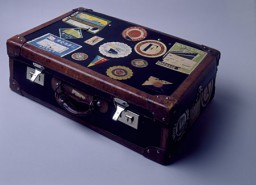
A small group of Jewish refugees left Japan to join a small Jewish community in Harbin, Manchuria, in Japanese-occupied China. This image shows the interior of a leather suitcase carried by one of them to Harbin, China, 1940-1941. [From the USHMM special exhibition Flight and Rescue.]
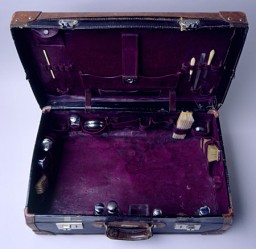
Notebook of Josef Fiszman, a refugee writer from Warsaw. He sold articles to Jewish newspapers in Shanghai and Harbin but still needed help to live from the American Jewish Joint Distribution Committee. Writing in Yiddish, Fiszman rotated the notebook in order to write from right to left (the words "Note book" thus appear to be upside down in this image). [From the USHMM special exhibition Flight and Rescue.]
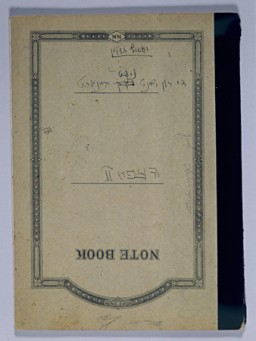
We would like to thank Crown Family Philanthropies, Abe and Ida Cooper Foundation, the Claims Conference, EVZ, and BMF for supporting the ongoing work to create content and resources for the Holocaust Encyclopedia. View the list of donor acknowledgement.